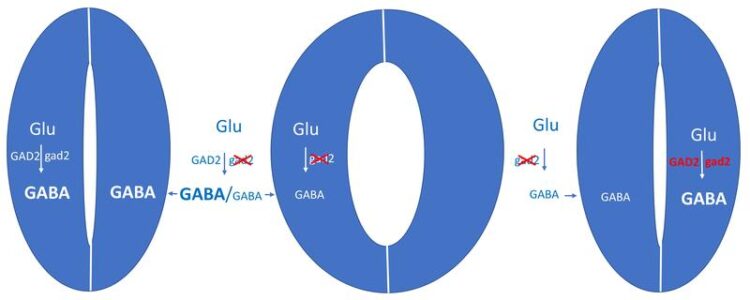Plants Remember Drought

During drought, the signalling molecule GABA is produced and inhibits the opening of leaf pores.
Rainer Hedrich / University of Würzburg
During drought, plants use a signalling molecule known from animals to limit their water loss. The molecule provides them with a kind of memory of how dry the day was.
“I‘ve been studying how plants regulate their water balance for over 35 years. To find a completely new and unexpected way for saving water has certainly been one of the most surprising discoveries in my life.” So says Professor Rainer Hedrich, plant scientist and biophysicist from Julius-Maximilians-Universität (JMU) Würzburg in Bavaria, Germany.
Hedrich’s group discovered this new strategy together with researchers from the University of Adelaide in Australia. The results have been published in the journal Nature Communications.
GABA quantity as stress memory
The publication shows: plants use the signalling molecule GABA (gamma-aminobutyric acid) to remember the dryness of a day. The drier it is, the more GABA accumulates in the plant tissue during the day. And the next morning, the amount of GABA determines how wide the plant opens its leaf pores. The opening width of these pores can limit water loss.
GABA is a signalling molecule that also occurs in humans and animals: there it is a messenger substance of the nervous system. Plants have no nerve cells and no brain. And yet GABA is now also found in them in connection with memory-like processes.
Rainer Hedrich names another connection: Short-term memory, which the carnivorous Venus flytrap uses to count the number of times its prey touches it, depends on the calcium level in the cell. And it is the calcium level that regulates the enzymatic biosynthesis of GABA in plants.
Low water needs, high drought tolerance
The GABA effect has been demonstrated in various crops, as Professor Matthew Gilliham of the University of Adelaide explains: “Under the influence of GABA, barley, broad beans and soybeans, for example, close their leaf pores.” Laboratory plants that produce more GABA due to mutations also react in this way. In experiments, these mutants need less water and survive drought longer.
Scientists know of other signalling substances in plants that cause the leaf pores to close. But GABA relies on a completely different mechanism of action, explains the lead author of the publication, Dr Bo Xu from the Australian Research Council Centre of Excellence in Plant Energy Biology.
Drought-tolerant plants for the future
Insights into the water-saving mechanisms and drought tolerance of plants are becoming increasingly important in times of climate change. For some years now, increasing heat and drought have been affecting many crops. The earth’s water resources that can be used for agriculture are also threatened. Mankind is therefore likely to be increasingly dependent on new varieties that still produce good yields with as little water as possible.
Wissenschaftliche Ansprechpartner:
Professor Rainer Hedrich, Chair of Botany I (Plant Physiology and Biophysics), University of Wuerzburg, T +49 931 31-86100, hedrich@botanik.uni-wuerzburg.de
Professor Matt Gilliham, Director of the Waite Research Institute, University of Adelaide, T +61 8 8313 8145, Mobile +61 431 663 614, matthew.gilliham@adelaide.edu.au
Originalpublikation:
GABA signalling modulates stomatal opening to enhance plant water use efficiency and drought resilience, Nature Communications, 29 March 2021, Open Access:
https://doi.org/10.1038/s41467-021-21694-3
Media Contact
All latest news from the category: Life Sciences and Chemistry
Articles and reports from the Life Sciences and chemistry area deal with applied and basic research into modern biology, chemistry and human medicine.
Valuable information can be found on a range of life sciences fields including bacteriology, biochemistry, bionics, bioinformatics, biophysics, biotechnology, genetics, geobotany, human biology, marine biology, microbiology, molecular biology, cellular biology, zoology, bioinorganic chemistry, microchemistry and environmental chemistry.
Newest articles

Silicon Carbide Innovation Alliance to drive industrial-scale semiconductor work
Known for its ability to withstand extreme environments and high voltages, silicon carbide (SiC) is a semiconducting material made up of silicon and carbon atoms arranged into crystals that is…

New SPECT/CT technique shows impressive biomarker identification
…offers increased access for prostate cancer patients. A novel SPECT/CT acquisition method can accurately detect radiopharmaceutical biodistribution in a convenient manner for prostate cancer patients, opening the door for more…

How 3D printers can give robots a soft touch
Soft skin coverings and touch sensors have emerged as a promising feature for robots that are both safer and more intuitive for human interaction, but they are expensive and difficult…





















